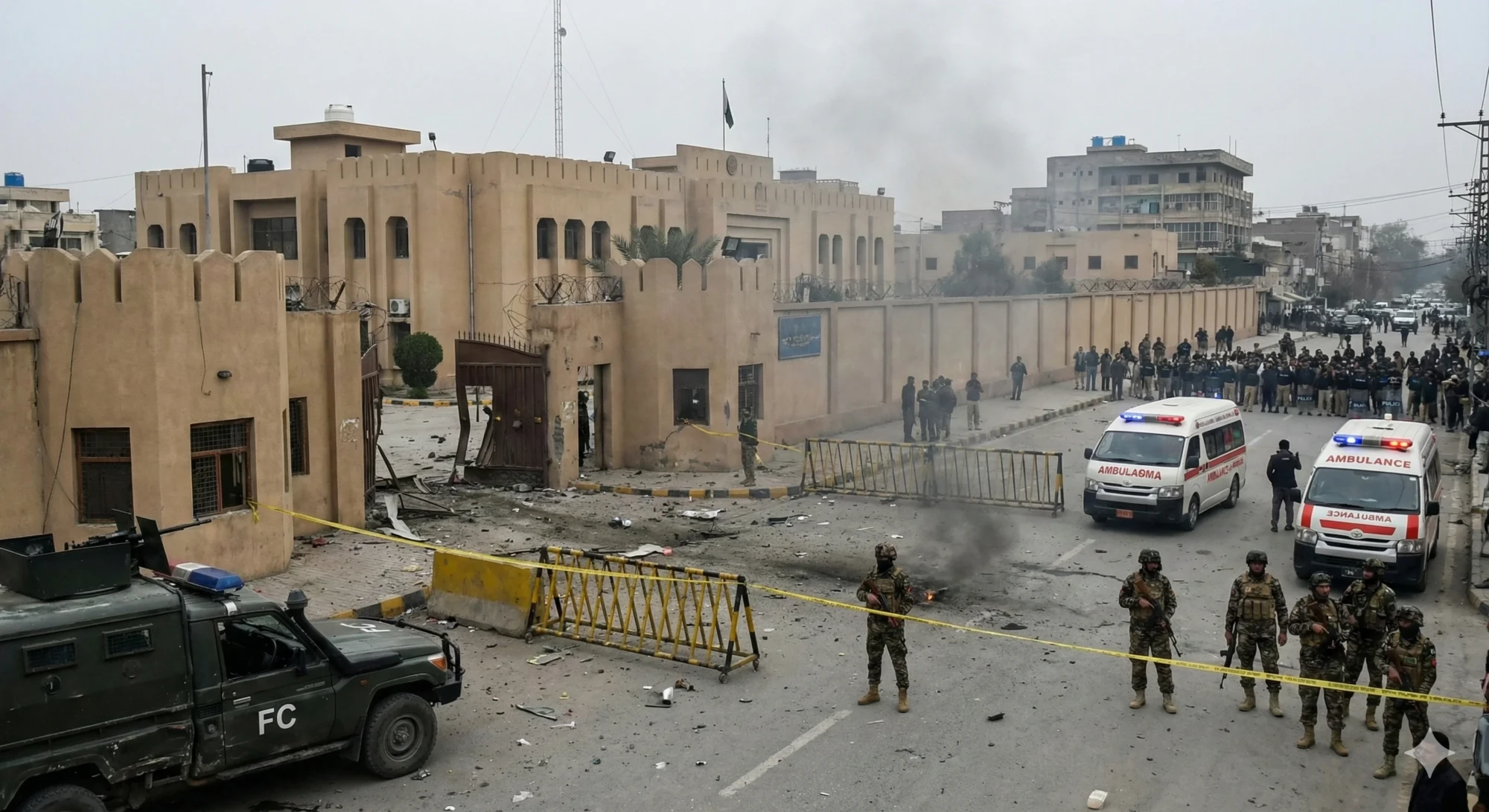Peshawar FC Headquarters Attack: Timeline of Events and Official Response

On Monday morning, militants carried out a deadly attack on the Federal Constabulary (FC) Headquarters in Peshawar’s Saddar area. The assault left three FC personnel dead and several others injured, but police and security forces acted quickly to stop the attackers from causing a larger tragedy. Here is a detailed timeline of how the incident unfolded and how officials responded.
8:10 a.m. – The First Blast
The attack began at around 8:10 a.m., a busy time when children were heading to schools and the area was crowded. One attacker approached the main gate of the FC Headquarters, disguised under a shawl. He detonated explosives at the checkpoint, killing three FC personnel instantly.
8:15 a.m. – Armed Entry
Moments after the blast, two more attackers entered through a side gate. They were armed with rifles and grenades. Moving toward the motorcycle stand inside the compound, they opened fire on security personnel and civilians nearby.
8:20–8:40 a.m. – Gun Battle
For nearly 15 to 20 minutes, heavy firing took place inside the compound. FC personnel engaged the attackers in a fierce exchange. Both militants were eventually shot dead before they could advance deeper into the headquarters or take hostages.
Casualties and Injuries
Police confirmed that three FC personnel were killed in the initial blast. At least five civilians were injured during the firing, bringing the total number of wounded to eight. Rescue 1122 teams quickly reached the site, and ambulances transported the injured to Lady Reading Hospital, where doctors declared an emergency.
Immediate Security Measures
The FC Headquarters is located on Sunehri Masjid Road, a busy commercial area with shops and petrol pumps. After the attack, the entire zone was sealed off, traffic was stopped, and bomb disposal squads were deployed to clear the compound.
Police Statement
CCPO Peshawar Dr. Mian Saeed confirmed that the attackers were heavily armed and carried grenades. He explained that their main objective was to take hostages inside the compound, but the quick response of FC personnel foiled the plan. He added that clearance operations were underway to secure the premises.
Federal Government Response
Interior Minister Mohsin Naqvi expressed sorrow over the deaths of FC personnel. He praised their bravery, saying they prevented a much larger tragedy. Naqvi directed hospitals to provide the best medical care to the injured and assured that the government stands with the families of the victims.
Provincial Government Response
Chief Minister Khyber Pakhtunkhwa Sohail Afridi strongly condemned the attack, calling it “deeply tragic.” He said those who try to disturb Pakistan’s peace are enemies of the nation. Afridi added that the provincial government has already ordered modern equipment and bulletproof vehicles for police, and he is confident that the force will defeat terrorism. He also confirmed that he has received full briefings from the corps commander and security institutions.
Historical Context
This is not the first time the FC Headquarters has been targeted. In August 2010, a suicide bomber killed Commandant Safwat Ghayur and four police officers near the same location. The latest attack shows that militants continue to view this site as a symbolic target in their campaign against security forces.
Analysis
The attack on the FC Headquarters highlights the continuing challenge of militancy in Khyber Pakhtunkhwa. The attackers’ plan to take hostages shows their intent to weaken state institutions and spread fear among the public. However, the swift and coordinated response of FC personnel and police demonstrates improved preparedness and resilience. The timing of the assault, during school hours, was clearly aimed at creating panic among civilians, but the rapid containment of the situation prevented a larger tragedy. This incident underscores both the determination of militants to destabilize the region and the growing capability of security forces to counter such threats.
Way Forward
The Peshawar attack is a reminder that terrorism remains a serious challenge in Pakistan. Continued investment in modern equipment, training, and intelligence is essential to strengthen police and FC capabilities. At the same time, political leadership must maintain unity and provide consistent support to security institutions. By combining swift operational responses with long‑term reforms, Pakistan can reduce the risk of future attacks and protect both its citizens and its institution

